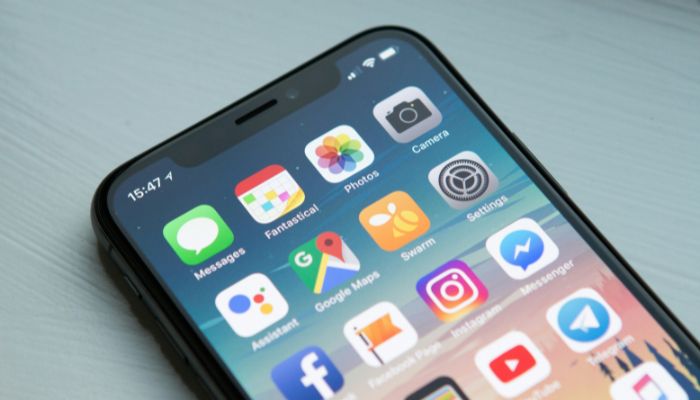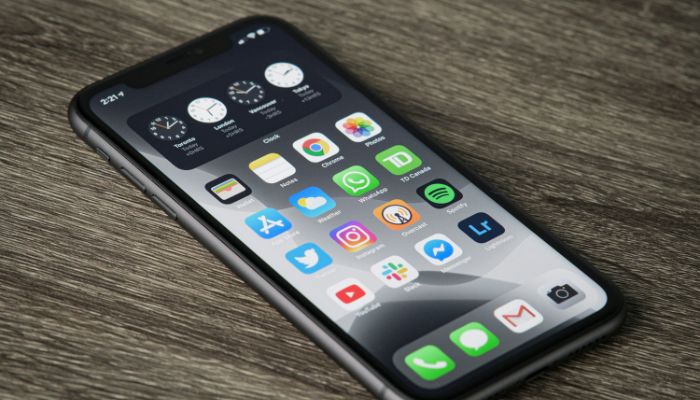
Yes, an iPhone can potentially be hacked by texting. Despite its advanced security features like biometric authentication and two-factor authentication, vulnerabilities in iMessage have been exploited by sophisticated spyware such as Pegasus. Cybercriminals employ tactics including “zero-click” exploits, where no user interaction is needed, and specially crafted messages to execute malicious code. These can lead to unauthorized data access and device control.
Keeping your operating system updated and practicing vigilant security measures can mitigate risks. To understand more about prevention strategies and the importance of regular updates, consider exploring the detailed information available. For additional protection, explore iPhone spam call detection to enhance your device’s security.
Understanding Iphone Security Features
Understanding iPhone security features is crucial for grasping how your device protects against potential threats. Central to iPhone security is iPhone encryption, which safeguards data stored on the device and transmitted across networks. This encryption ensures that only authorized users can access sensitive information, making it significantly harder for unauthorized parties to intercept or decode the data.
Biometric authentication, such as Face ID and Touch ID, adds an extra layer of security by requiring a physical characteristic to unlock the device. This reduces the risk of unauthorized access compared to traditional passwords, which can be guessed or stolen.
Secure messaging is another pivotal feature, particularly through Apple’s iMessage. Messages sent via iMessage are end-to-end encrypted, ensuring that only the sender and recipient can read the content. This protects against eavesdropping and data breaches.
Two-factor authentication (2FA) further enhances security by requiring a second form of verification, typically a code sent to a trusted device, in addition to the password. This makes unauthorized access more difficult, even if the password is compromised.
Lastly, privacy settings allow users to control app permissions, location sharing, and data access, ensuring a tailored and secure user experience. These combined features create a robust security framework for iPhone users.
How Cybercriminals Manipulate Texts?

While iPhone security features provide robust protection, cybercriminals continuously seek ways to exploit potential vulnerabilities. One significant method is through text message vulnerabilities. Hackers often employ social engineering tactics to deceive users into revealing sensitive information or installing malicious software. To stay safe, it is crucial to know how to detect phishing links on iPhone before clicking on any suspicious message.
For example, phishing scams via text messages can trick users into clicking on malicious links or divulging personal data, such as passwords and credit card details.
Despite advancements in data encryption methods, cybercriminals can still bypass these defenses if users are not vigilant. Encrypted data remains secure, but if a hacker gains access to the device through deceptive methods, the encryption becomes ineffective.
Malware detection techniques have also become more sophisticated, yet some malicious software can evade these systems if users unknowingly grant permissions.
Instances of Iphone Text Hacks
Numerous instances demonstrate that iPhone text hacks are not mere theoretical threats but real and impactful breaches. One of the most famous cases is the Pegasus spyware attack, where vulnerabilities in Apple’s iMessage were exploited to gain unauthorized access to iPhones. This high-profile breach highlighted significant security flaws within the messaging platform.
Common methods used in such hacks often involve sending a specially crafted message that exploits software vulnerabilities. These messages can trigger malicious code execution without the user’s interaction, making the attack both stealthy and effective.
Another notable example is the “zero-click” exploit, which requires no user intervention. Such methods have been used to target journalists, activists, and government officials, leading to severe consequences for the victims.
The impact on victims ranges from unauthorized data access to complete device control, exposing sensitive information and compromising personal security. Awareness of these risks has led to precautionary measures such as regular software updates and the implementation of end-to-end encryption.
These instances underscore the importance of robust security practices and vigilance in safeguarding against potential text-based iPhone hacks. Users are encouraged to stay informed and proactive to mitigate these sophisticated threats.
Possible Consequences of Text Hacking

The ramifications of text hacking on an iPhone can be profound and multifaceted.
- One of the primary concerns is privacy risks. When a hacker gains access to your text messages, they can infiltrate your personal communications, compromising sensitive conversations and data. This exposure of personal information can lead to severe consequences.
- Another critical issue is identity theft. Hackers can use the information gleaned from your texts to assume your identity, opening bank accounts, applying for credit, or conducting fraudulent activities in your name. Such identity theft can be difficult to detect and rectify, often leaving lasting damage to your credit and reputation.
- Financial loss is also a significant concern. Through text hacking, criminals can access financial information such as bank account details, credit card numbers, and other sensitive data. This can result in unauthorized transactions and financial fraud, leading to substantial monetary losses.
- Moreover, the exposure of personal information can have far-reaching effects. Sensitive data, once in the wrong hands, can be used to manipulate or coerce individuals, leading to emotional and psychological distress.
- Lastly, there are legal implications. Victims of text hacking may need to engage in legal actions to reclaim their identities and seek restitution, which can be a long and arduous process involving law enforcement and legal professionals.
Strategies to Prevent Iphone Text Hacks
Given the severe consequences of text hacking, it becomes imperative to adopt effective strategies to safeguard your iPhone. Password protection is the first line of defense. Ensure you use a strong, unique password for your device and change it periodically.
Keeping your device up-to-date with the latest software updates is crucial. These updates often contain important security patches that protect against newly discovered vulnerabilities.
Similarly, enabling two-factor authentication adds an extra layer of security by requiring not just a password but also a second form of verification, such as a code sent to your phone.
Another essential strategy is to use data encryption. iPhones have built-in encryption features that protect your data by making it unreadable without proper authentication. Make sure you enable this feature to keep your information secure.
Lastly, manage app permissions carefully. Regularly review and control the permissions granted to apps on your iPhone. Only allow necessary permissions and be cautious about apps requesting access to sensitive data or system features.
Evaluating the Effectiveness of Ios Updates

Evaluating the efficacy of iOS updates reveals their pivotal role in securing iPhones against potential text hacking threats. Regular updates from Apple aim to close security loopholes and enhance device protection. The impact of updates is multifaceted, addressing various vulnerabilities that could be exploited through malicious texts.
The effectiveness of these updates can be broken down into several key areas:
- Impact of Updates: Each iOS update includes patches for known security flaws, significantly reducing the risk of text-based hacks.
- Vulnerabilities Addressed: Apple’s updates target specific vulnerabilities identified by security researchers, ensuring that new threats are mitigated promptly.
- User Compliance: The effectiveness of these updates hinges on user compliance; timely installation is crucial for maintaining security.
- Security Enhancements: Regular updates incorporate advanced security enhancements, such as improved encryption techniques and better malware detection.
Update frequency is another critical factor. Apple releases updates periodically, sometimes issuing emergency patches for immediate threats. This proactive approach helps to maintain a secure environment for iPhone users. Ultimately, the continuous evolution of iOS through updates is essential for safeguarding devices against emerging text-based hacking methods.
Conclusion
While iPhones possess robust security features, cybercriminals can still exploit vulnerabilities through text messages. Documented instances demonstrate that text hacks can lead to severe consequences, including data breaches and unauthorized access. Implementing strategies such as recognizing phishing attempts and keeping iOS updated can significantly mitigate these risks. Regular evaluation of iOS updates’ effectiveness is crucial in maintaining the security of iPhones against evolving cyber threats. Vigilance and proactive measures remain essential for safeguarding personal information.